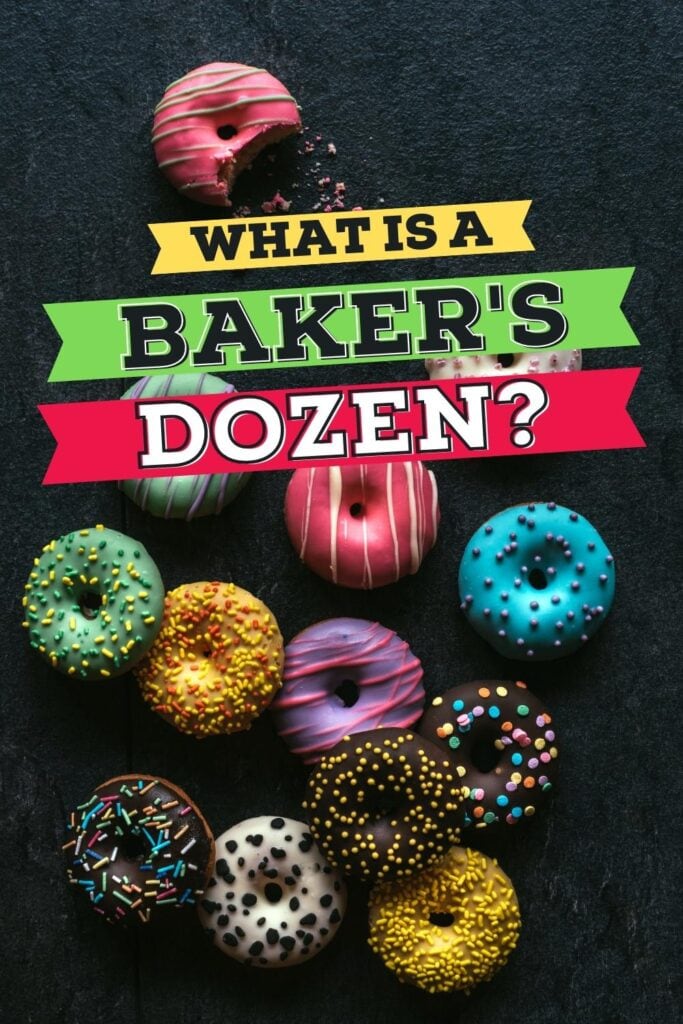
What is a baker’s dozen? How did this phrase come to be?
If you’re even remotely into baking, chances are you’ve stumbled across the term “baker’s dozen.” But do you know what it means?
Or have you just nodded along in conversations?
I first encountered this phrase while binge-watching The Great British Bake Off. (Which is a must-watch for any baking enthusiast.)
Naturally, curiosity set in. And I had to find out what a baker’s dozen was. And how it came to be.
I’m here to share all I know now that I’ve gathered all the info.
What is a baker’s dozen? Let’s get right into it!

What Is a Baker’s Dozen?
A standard dozen is a 12-count of something: eggs, muffins, cookies, etc. A baker’s dozen levels up by adding one more, making it a 13-count.
So, if you ask for a baker’s dozen muffins at a bakery, you’ll receive 13. It is like a bit of a high-five from the baker!
Now, this term primarily refers to baked goods. But it can also be used more broadly for any group of 13 items.
Interestingly, some might even use it on rare occasions for 14 items. However, 13 is the classic number that sticks.
It’s a quirky, endearing tradition that makes baking even more charming.
In the baking world, precision is paramount. So, numbers and exact measurements play a crucial role.
That’s why the term baker’s dozen may surprise you with its meaning… and origins.

The History of a Baker’s Dozen
If you think this is just a marketing ploy, think again!
The term “baker’s dozen” is rooted in medieval England.
In the 13th century, English bakers had a reputation for being stingy with their portions. All the while, they were still charging full price.
This did not sit well with King Henry III. So he, keen on fairness, enacted a law to keep bakers in check.
This law, the Assize of Bread and Ale, regulated the size and price of bread.
If bakers sold underweight bread, they faced severe penalties, including fines or even public flogging.
Bakers were not eager to be on the wrong side of this law (understandable). So, they began including an extra loaf with every dozen.
This was partly as a buffer to ensure they met the required weight. And partly as insurance against any customer complaints.
There are other theories as well. For example, some suggest bakers include an extra loaf as a retailer commission.
Another idea posits the extra loaf ensured an even dozen if one got damaged. However, the first explanation holds more historical weight.
So, the Baker’s Dozen was born out of a blend of caution and customer satisfaction. And now you get 13 pieces for the price of 12!
Today, it remains a charming tradition. A little bonus- hinting at when bakers would rather give more bread than risk flogging.
I mean, who wants to be whipped over bread?









